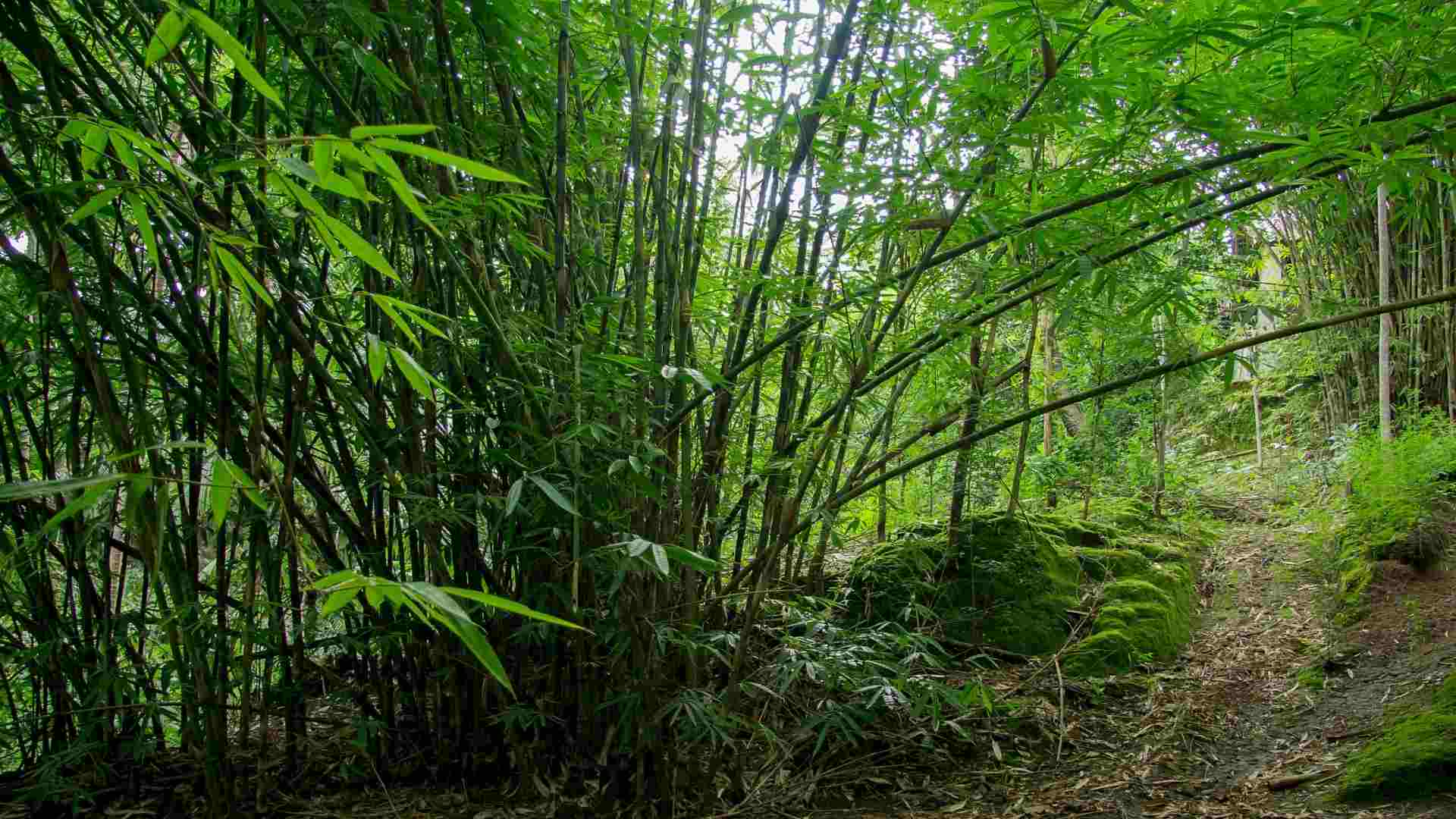Once upon a time, a clever campaign or a catchy slogan like “Where’s the beef?!” was enough to win over legions of customers. But today, in the age of climate crisis and the internet, consumers want to know who they’re buying from. They want more than a product, they want a commitment. Customers want to know how that beef was raised, what it was fed, and how far it was shipped.
We no longer support companies simply for what they make, but for why they make it and what they stand for. And one way a company can display stewardship, offset greenhouse emissions and heal the planet is by supporting bamboo cultivation. To learn about the many opportunities around the world to take action and support new and existing bamboo projects, please contact us here through the website.
The benefits of planting bamboo are diverse, for improving the atmosphere, protecting forests, and proving your corporate responsibility. These days, millennial shoppers demand more than an image, they want action and authenticity. When it comes to replacing plastics, restoring degraded land, creating economic opportunities, and sequestering CO2, few things check as many favorable boxes as a well-managed bamboo farm. For positive PR and global well-being, major corporations need to give bamboo some serious consideration.
Offsetting emissions
International treaties like the Kyoto Protocol and the Paris Agreement, in an effort to stave off a climate catastrophe, have begun requiring countries and corporations to dramatically reduce their carbon dioxide emissions. But because many companies, like refineries and airlines, are finding it impossible to meet these ambitious reduction goals, a carbon credit market now plays a critical role in the equation.
Gross emitters, unable to sufficiently curb their output of greenhouse gasses (GHGs), also have the option to purchase credits from other companies and projects with negative carbon footprints. Through this deceptively simple system, polluters are able to balance or offset their emissions while financially supporting and incentivizing operations that actively remove GHGs.
In many cases, companies are trying to achieve mandatory levels of reduction, as laid out by national and international law. To meet these requirements, they can purchase verified carbon credits. But in other cases, companies are trying to meet their own sustainability goals. For them, the market offers voluntary carbon credits, which are issued through a less stringent method of certification and verification. Accordingly, it’s not about mandatory compliance, but merely doing something positive for the planet.
Either way, we see the incentives for carbon-negative or carbon-neutral technologies and innovations expanding quickly. And bamboo, with its famously fast growth rate, is capable of sequestering more CO2 and generating about 35% more oxygen than an equal area of trees. For this reason alone, bamboo farming is becoming an extremely attractive option for corporations and investors. Whether or not you can certify your bamboo farm or forestry project to earn verified credits, however, remains a thorny question.
See my in-depth story on Growing bamboo for carbon credits.
The quest for bamboo carbon credits
At the moment, we have no standardized methodology for measuring carbon sequestration and issuing verified carbon credits for bamboo cultivation. That doesn’t mean it cannot be done. EcoPlanet Bamboo has begun earning such credits from one of its larger plantations in Central America. And they plan to do more of that in Africa and Asia. But the verification process is extremely cumbersome and expensive, making it unavailable to smallholder farmers, and still unattainable for the majority of commercial growers.
Industry voices, at the World Bamboo Organization and the bamboo homebuilding company, Bamcore, echo the need to develop a standard methodology. And there is hope that a concerted effort between these public and private institutions will bring this goal to reality within the next couple of years. The combined demand for bamboo products and verified carbon credits is creating enormous pressure to implement a feasible system to issue credits and reward farmers.
Demonstrating environmental commitments and responsibility
With or without the international mandates to curb GHG emissions, consumers are increasingly interested in corporate transparency, in knowing what kind of operation a company is running and what true values, if any, they stand for.
We saw this phenomenon displayed with spectacular colors in the recent Nike campaign featuring Colin Kaepernick. The slogan, “Stand for something even if you risk losing everything”, says it all. As a brand, Nike proved itself willing to stand up for Kaepernick, even at the cost of alienating a wide swath of the population. Their pledge was so courageous that you had to respect it. Even if you disagreed with their position, it was hard not to admire their display of principles.

Between Climate Change, Black Lives Matter, and the #MeToo movement, more and more consumers are calling for brands to take a position on the most salient issues of the day. You can read it as culturally divisive. But you can also recognize and appreciate the fact that corporations, formerly driven solely by profits, are now seeing a day of reckoning. Social pressure has finally grown to the point where companies, large and small, are being forced to do some serious soul searching, to consider things like values and higher purpose goals.
As a result, we see B Corporations and programs like One Percent for the Planet carrying greater and greater currency in the mainstream marketplace. We used to drive through an intersection and look at the relative prices at the gas stations on each corner. Nowadays, we’re equally or more likely to take a close look at whether an establishment is waving an American flag, a BLM flag, or a rainbow LGBTQ flag in its window.
But flag waving and virtue signaling are no longer enough. With the device in your hand and a few extra seconds, you can bring up all kinds of stories about any company and see what they’re really up to. I usually start simple with Wikipedia, follow the money, then scroll to the end to look for the controversies. From there, it may be worth cross-checking at Snopes for more details. If I’m in the mood for a rabbit hole, I might also check another trusted source or two, but that’s generally not necessary.
Whether you and your company are more concerned about meeting sustainability goals, boosting your public image, or simply doing what’s best for this planet we call our home, supporting bamboo can achieve all those goals at once. Not only will it help you and your board members sleep better at night, but it will also give you something to brag about on your website and in your next marketing campaign.
Bamboo and environmental responsibility
In the same way that many corporations now sponsor or donate a percentage of their proceeds to projects like One Tree Planted, some might wish to support bamboo agroforestry efforts in Asia, Africa or Central America. The regions where bamboo grows best also happen to be the areas that are being hit hardest by Climate Change and deforestation.
It could be the result of overlogging, palm oil farming, slash and burn agriculture, or unprecedented droughts, but the consequences are real. Forest loss means habitat loss, and it leads to the degradation of landscapes and an increase in atmospheric carbon.
Trees, after all, are the lungs of our planet. But for the last couple of decades, we have been destroying around 15 to 18 million hectares of forest (an area approximately the size of Maryland) every year, at a rate of about 2,400 trees per minute. And between 1990 and 2015, the world lost a staggering 10% of its wilderness areas. (Source: Current Biology.)
In areas where deforestation has been most severe, or other natural and manmade disasters have denuded the terrain, bamboo offers a promising solution. Its low nutrient requirements, tenacious roots, and vigorous growth habit make bamboo an ideal pioneer species.

Where other trees and crops may fail to flourish, bamboo can gain a foothold. As it does, the roots can break up dry, rocky soil, and at the same time bind loose topsoil together. These degraded landscapes are highly vulnerable to floods and landslides, but bamboo roots are especially effective at preventing erosion.
Meanwhile, the fallen leaves and the underground rhizomes both add micronutrients to the soil. Finally, bamboo is a tall grass, and in reforestation projects, it will quickly provide light shade and shelter for other tender seedlings to take root and establish themselves. Saplings stand a better chance of success under these conditions than in a barren landscape.
Whether in forestry or agriculture, the benefits of bamboo are well reported. It does not tax the soil, and because of its high metabolism, produces more oxygen than an equal area of trees. As a grass, a mature bamboo grove can be harvested continuously without the need for replanting. New shoots come up every year and reach their full height in a single growing season. And the use of bamboo for wood products, anything from charcoal to building material, takes enormous pressure off of existing forests.
Like anything else, these projects need to be managed responsibly to ensure the greatest benefits for ecology. But when done correctly, companies can support these efforts and make a very positive and lasting impact.
Bamboo and social responsibility
More than just the landscape and the atmosphere, bamboo cultivation can bring great benefits to people and communities in the developing world as well. From planting seeds to delivering finished products, and all stages in between, a decent-sized bamboo farm can easily create hundreds of jobs.
From the outset, bamboo can restore degraded land and make it more hospitable for farming. With intercropping, annual food crops, like peppers and yams, can grow in between small bamboo plants for the first three years. And as the topsoil gradually improves, conditions for farming in the surrounding area continue to improve. Bamboo is excellent for preventing erosion and mitigating floods.

Within a few years, bamboo is able to provide some biomass for basic products like charcoal or handicrafts. And with each passing year, the quality of the culms gets better and better. After six to eight years, high-grade bamboo poles are ready to harvest and turn into simple construction material or process into more sophisticated, laminated products like panels and flooring.
The range of possible products and monetization strategies continues to grow as innovation ripples across the industry. Each process requires some amount of labor, both skilled and unskilled, and new opportunities continue to arise in areas of agronomy, business management, logistics, engineering, and so forth.
Check out my article on Bamboo for Poverty Relief to learn more.
Leave a positive legacy with bamboo
The benefits of bamboo cultivation are well known and widespread. If your company is looking for ways to make a positive impact on the planet, feel free to contact us. We have opportunities to support new and existing bamboo farms and forests throughout the world. Your participation can have a direct impact in improving social and environment conditions, at the same time elevating your public image.
Take a look at some of these articles to learn more.




















